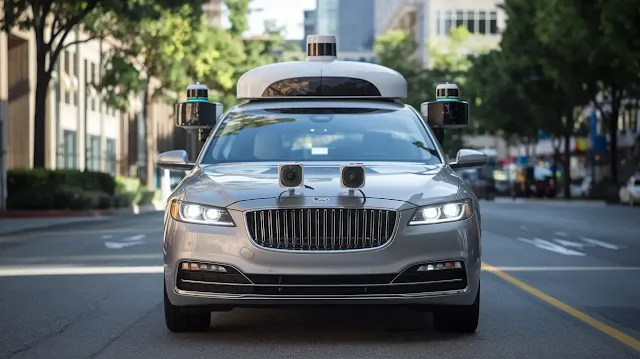The AI Revolution in Transportation: How Machine Learning is Transforming Mobility
When you think of transportation, what’s the first thing that comes to mind? Traffic congestion? Delays? Inefficient planning? Maybe all of the above! But what if I told you that machine learning is revolutionizing transportation, making it smarter, faster, and more efficient? Welcome to the future, where AI is redefining mobility!
Why Does Transportation Need Machine Learning?
The biggest problems in transportation aren't just about traffic. Frequent breakdowns, inefficient public transport schedules, high fuel consumption, unexpected delays, and, of course, road accidents all contribute to inefficiency. The solution? Big data analytics, smart predictions, and proactive decision-making, all powered by machine learning. By uncovering hidden patterns within vast data sets, AI helps optimize transportation systems like never before!
How AI is Revolutionizing Transportation
Machine learning isn’t just an enhancement, it’s a complete shift in how transportation operates. Imagine a system that continuously learns, adapts, and optimizes itself based on real-time conditions. That’s the power of AI! Here’s how it's making an impact:
Smart Traffic Management : AI-powered traffic signals adjust dynamically based on real-time congestion data, reducing unnecessary stops.
Optimized Public Transport Schedules : Bus and train schedules are adjusted in real time to match demand, improving efficiency.
Predictive Maintenance Services : Vehicles and infrastructure are monitored continuously, preventing breakdowns before they happen.
Self-Driving Vehicles : AI-driven cars and autonomous transport are becoming a reality, enhancing road safety and efficiency.
Big Data for Logistics Efficiency : AI streamlines supply chains, optimizing shipping routes and warehouse management.
Traffic Congestion Forecasting : AI algorithms analyze historical patterns to predict and prevent traffic bottlenecks.
Enhanced User Experience : AI-powered apps suggest the best routes, predict delays, and offer seamless travel experiences.
Challenges of Implementing Machine Learning in Transportation
While AI presents groundbreaking solutions, integrating it into transportation isn’t without hurdles. Here are some major challenges:
Data Availability and Quality : AI models require vast amounts of high-quality data, which can be difficult to obtain and standardize.
Aging Infrastructure : Many transportation systems lack the digital infrastructure needed for AI implementation.
Security and Privacy Risks : Collecting and analyzing personal travel data raises concerns about privacy and data security.
Impact on Jobs : The shift towards automation may disrupt traditional transportation jobs, requiring workforce adaptation.
High Costs of Implementation : AI technology requires significant investment in hardware, software, and training.
The Future of Jobs in AI-Powered Transportation
One of the biggest concerns with automation is its impact on employment. Will AI replace human workers? The reality is that AI will transform jobs rather than eliminate them. Traditional roles will evolve, and new opportunities will emerge in AI development, data analysis, and system management. The key lies in upskilling and adapting to the changing landscape of the transportation industry.
Key Technologies Driving Machine Learning in Transportation
Several advanced technologies power the machine learning revolution in transportation. Here’s a closer look at the most impactful ones:
Computer Vision : AI-driven cameras monitor roads, detect traffic patterns, and improve safety.
Big Data Analytics : Large-scale data processing helps optimize transport routes and passenger flow.
Deep Learning : Neural networks enable autonomous systems to learn from real-world driving experiences.
Internet of Things (IoT) : Connected devices enhance vehicle communication, improving overall efficiency.
Predictive Algorithms : AI-powered forecasting models optimize scheduling and reduce operational risks.
The Future of AI in Transportation: A Reality in Progress
AI-powered transportation is no longer just an idea, it’s happening now. From self-driving taxis to intelligent traffic control, machine learning is reshaping the way we move. In the near future, you may find yourself in a vehicle that predicts your destination before you even enter it! The question isn’t whether AI will transform transportation, it’s whether we’re ready for the change.
Between the excitement of innovation and the challenges of adoption, one thing is clear: transportation as we know it is evolving, and AI is leading the way!


